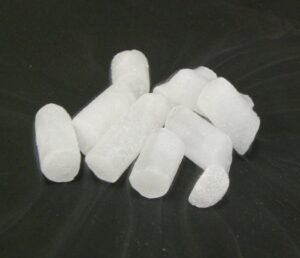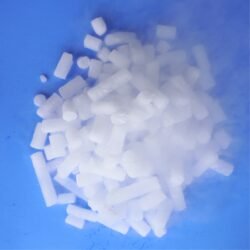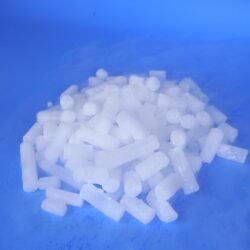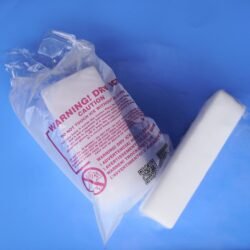Facts You Need to Know about Mysterious Substance – Dry ice
Welcome to the intriguing world of dry ice! Often surrounded by an air of mystery, dry ice is not just a staple in science fiction but a fascinating substance used in various real-world applications. In this comprehensive guide, we’ll dive into everything you need to know about dry ice, from its basic definition to its practical uses. Get ready to discover some cool (quite literally!) dry ice facts and how it plays a significant role in different industries.
What is Dry Ice?
Dry ice is the solid form of carbon dioxide (CO2), quite different from the regular water ice we’re accustomed to. Unlike water ice, which melts into a liquid, dry ice sublimates – meaning it turns directly from a solid into a gas. This unique property creates the foggy effect often seen in movies and on stage.
What is Chemical Formula of Dry Ice?
The chemical formula for dry ice is CO₂. It is the solid form of carbon dioxide, which sublimates directly from a solid to a gas at temperatures of -78.5°C (-109.3°F) under normal atmospheric pressure.
What is Dry Ice Composed Of?
Dry ice is composed of frozen carbon dioxide—a gas that we naturally exhale when we breathe. Unlike regular ice made from water, dry ice forms when carbon dioxide gas is cooled to super low temperatures, around -109°F. At this temperature, the gas turns directly into a solid.
What makes it so cool? Dry ice doesn’t melt into a liquid like regular ice. Instead, it sublimates—a fancy word that means it changes straight from a solid to a gas. This is why dry ice creates that spooky, foggy effect when it “melts” in the air.
So, if you’re wondering what dry ice is composed of: it’s frozen carbon dioxide plus super cold temperatures = instant fog and fun science magic!
The Making of Dry Ice
Dry ice is made by compressing and cooling carbon dioxide gas until it liquefies. This liquid CO2 is then rapidly expanded, causing it to freeze into a snowy substance. This snow-like CO2 is then pressed into blocks or pellets, forming the dry ice we use.
Can Dry Ice Melt?
Technically, dry ice doesn’t melt like regular ice. Instead, it sublimates, meaning it turns directly from a solid into a gas without passing through a liquid phase. This occurs at -109.3°F (-78.5°C), causing dry ice to vanish as carbon dioxide gas instead of leaving behind water. The process depends on temperature and environmental conditions, such as ventilation and the size of the dry ice piece. To preserve it longer, keep it in an insulated cooler, but never store it in an airtight container due to pressure buildup.
The Temperature of Dry Ice
One of the most striking features of dry ice is its extreme coldness, if you are wondering how cold dry ice is, The temp of dry ice is -109.3°F (-78.5°C), making it far colder than regular ice. If you’re curious about what temp is dry ice in Celsius, it’s important to note that this cold temperature allows it to effectively freeze items and keep them frozen during transport. Understanding what is temperature of dry ice is essential for industries that rely on maintaining perishable goods or sensitive materials, such as the food and medical industries.
Density of Dry Ice
In addition to its temperature, the density of dry ice also plays a key role in its behavior and applications. With a density ranging between 1.2 and 1.6 kg/dm³, dry ice is much denser than water ice. This high density means that dry ice sinks in water, which is why it creates such dramatic fog effects when submerged. The rate of sublimation of dry ice depends on its exposure to temperature and airflow. Sublimation occurs faster in warmer environments, where dry ice transitions from a solid to a gas more quickly.
Rate of Dry Ice Sublimation
The dry ice rate of sublimation is an important factor to consider when planning how much dry ice is needed for a specific application. The sublimation rate can vary, but in general, dry ice sublimates at a rate of about 5 to 10 pounds per 24 hours in a standard cooler. For longer storage times, it’s crucial to account for this loss and adjust the amount of dry ice accordingly. Knowing the temp dry ice and its sublimation rate can help you manage it effectively for your needs, whether it’s for industrial use, transport, or creative applications.
The Science Behind Dry Ice
The science of dry ice is fascinating. Its ability to sublimate – transition directly from a solid to a gas – is due to its chemical composition and atmospheric pressure. Simple experiments, like placing dry ice in water, can showcase its sublimation, creating a dense, fog-like effect.
Uses of Dry Ice
Dry ice has a myriad of uses across different sectors. It’s widely used in food preservation, where its cold temperature helps keep items frozen during transport. In the entertainment industry, dry ice creates atmospheric fog effects. It’s also used in medical transportation, cleaning processes, and even in scientific research.
Handling Dry Ice Safely
Handling dry ice requires caution due to its extreme coldness. To avoid dry ice burns, always use protective gloves when handling it. It should be stored in insulated containers and never in an airtight container, as the gas expansion can cause a container to burst. When disposing of dry ice, let it sublimate in a well-ventilated area.
Paper Bag or Plastic Bag for Dry Ice
When it comes to handling and transporting dry ice, knowing the right containment method is essential for safety and effectiveness. The question often arises: paper bag or plastic bag for dry ice? While both options can be used, each has distinct advantages and limitations. A paper bag is typically recommended, as it provides some insulation while allowing for a bit of airflow, which prevents excessive buildup of carbon dioxide gas from the sublimation process. This airflow reduces the risk of pressure buildup, making it a safer option. In contrast, plastic bags can trap gas, which may cause them to expand and even rupture, posing a safety hazard. For safer handling, always consider using a paper bag or an insulated container specifically designed for dry ice to maintain control and prevent accidents during transport and storage.
Does Lab-Grade Dry Ice Carbonate Fruit?
Yes, lab-grade dry ice can carbonate fruit, creating a fun and fizzy experience when eaten. The carbon dioxide (CO₂) released by the sublimating dry ice is absorbed by the fruit, causing carbonation. To carbonate fruit safely, place small pieces of lab-grade dry ice in a sealed container with the fruit, ensuring the container is vented to prevent pressure buildup. The CO₂ will infuse into the fruit, making it bubbly and carbonated. However, be sure to use only food-safe, lab-grade dry ice for this process.
Fun Facts About Dry Ice
- Known in some circles as ‘cardice,’ dry ice has multiple names reflecting its unique properties.
- In high-pressure environments, dry ice can become liquid, showcasing its versatile nature.
- The existence of dry ice was first documented in 1835 by French chemist Charles Thilorier. The formation of dry ice was first noted when a container of liquid carbon dioxide was opened.
- It’s called ‘dry’ because it sublimates, skipping the liquid phase and turning directly into gas.
- Dry ice may look like regular ice or snow, but it’s much colder to the touch.
- Typically, dry ice is available as pellets or blocks, catering to different uses.
- Dry ice has a density ranging between 1.2 and 1.6 kg/dm³, denser than water ice.
- The molecular weight of dry ice is 44.01 g/mole.
- It has low thermal conductivity, making it an efficient insulator.
- Dry ice also exhibits low electrical conductivity.
- As a nonpolar substance, dry ice has unique chemical properties.
- Interestingly, dry ice has a dipole moment of zero.
- In water, dry ice sinks to the bottom due to its density.
- Dry ice’s specific gravity is recorded at 1.56.
- It’s denser than water, explaining why it sinks in fluids.
- The white vapor from sublimating dry ice is primarily water fog, with carbon dioxide mixed in.
- In areas with heavy dry ice use, the concentration of carbon dioxide in the air increases.
- Without proper care, handling dry ice can lead to frostbite or dry ice burns. Insulated gloves are essential.
- Dry ice can displace air with carbon dioxide, creating an unhealthy environment. In areas with dry ice, you might inhale more carbon dioxide than oxygen.
- Eating or swallowing dry ice is dangerous, potentially causing internal frostbite.
- Cellular Damage: Contact with dry ice can kill skin cells, leading to injuries.
- Sealing dry ice in airtight containers can lead to explosive pressure buildup.
- Dry ice is ideal for places lacking mechanical cooling systems.
- In industries, dry ice is used for cleaning through a technique called dry ice blasting.
Dry ice is more than just a smoky novelty; it’s a versatile, powerful tool with applications in various fields. From its unique properties to its wide range of uses, dry ice is truly a substance worth exploring. Always remember to handle it safely and marvel at its capabilities!
Contact us
For all your dry ice needs, from simple experiments to large-scale applications, contact us at Sub Zero Ice Services. Our wide range of products and expertise ensures you have access to high-quality dry ice solutions. Discover the magic of dry ice with us today!





